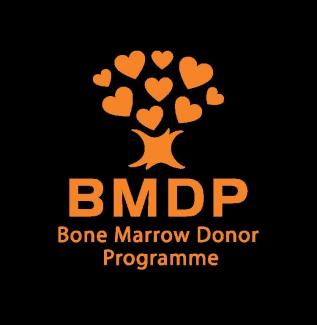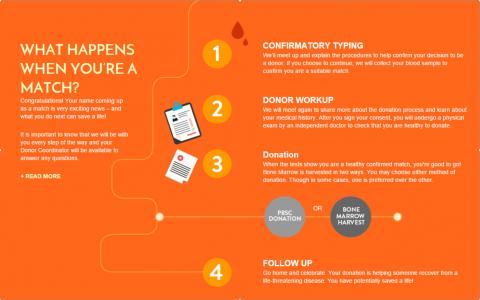
Jane Prior of the Bone Marrow Donor Programme, Singapore takes a closer look at the myths and misconceptions surrounding the impact bone marrow donation may have on your own health.
First, we need to understand why we need to donate blood stem cells. Certain diseases destroy bone marrows or cause it to not function normally. As bone marrow is crucial in the production of blood, this may lead to the endangerment of one’s life if the bone marrow is not working properly.
Myth 1: Donating bone marrow is painful.
In reality, donating bone marrow is no more than an extended blood donation! It is simple and safe! There are 2 methods to harvest bone marrow:
Method 1: Peripheral Blood Stem Cell Harvest (PBSC). 90% of donors go through this donation method.
Peripheral Blood Stem Cells are usually found in the blood stream. The donor will be given 4 daily injections of a hormone called G-CSF (Granulocyte-Colony Stimulating Factor) to stimulate the growth of their stem cells and mobilise them into the blood stream. This is usually done in the morning and the donor can continue with their normal daily activities. On the fifth day, the stem cells will be collected in an outpatient procedure that is very similar to blood donation except that it will take between 5-7 hours. Once completed, the donor is allowed to go home.
Method 2: Bone Marrow Harvest
The bone marrow is collected from the back of the pelvic bone using a special needle. The entire process takes 45 to 60 minutes whilst the donor is under general anaesthesia (GA) and you will feel absolutely no discomfort during the donation. You will be discharged the following day after the effects of the anaesthetic have worn off.
Whichever method a donor chooses, the bone marrow is replaced completely within 4-6 weeks. Therefore, there is no long term side effect!
Myth 2: Most patients receive marrow from a family member.
The chance of finding a match from family is only 30%. More often than not, a patient will have to rely on a stranger’s act of kindness. A matching donor is most likely to be found within the same ethnicity group. Hence, there is a very critical need for more Malays, Indians and people from mixed ethnicities to register as a bone marrow donor in Singapore.
Myth 3: Donor has to pay for the donation process
No, you do not need to pay for the process. For all expenses relating to the bone marrow donation, including travel expenses or unpaid leave, the donor will be reimbursed.
Now that we have addressed some myths, can we look at some common questions:
Is there any age-specific issue related to the bone marrow donor programme? Is the age of the donor important at all? And if so, why?
We require our donors to be between the ages of 17 – 49 years old. Based on medical research, it shows that younger donors provide the greater chance of transplant success.
Can the process of the testing be explained in a few simple steps? (Cheek swab aka registering)
Registering as a donor is simple. The potential donor has to fill up a consent form which requires information on donor’s medical history. After which the donor will submit a DNA sample via a cheek swab. We will send the sample to the laboratory and your result and contact details will be kept in the database till you are aged 60 years old. At any point of time, you might be found as a match for a patient and we will contact you!
How simple is the donation procedure?
Please refer to this chart.

Explain in a little more detail what exactly is this mild discomfort after the donation?
PBSC Donation Side Effects and Recovery
You may experience headaches, bone or muscle aches in the days before the collection. These are side effects of G-CSF injections that you receive to increase the number of blood stem cells in the bloodstream. These side effects usually disappear shortly after the collection.
Bone Marrow Donation Side Effects and Recovery
Most donors feel some soreness in the lower back for a few days but usually they will be back to work in less than a week. You should be back to your normal physical routine in a few weeks and your own marrow is completely replaced within four to six weeks.
How can more awareness be created so that more people are convinced that it is a simple procedure which is not harmful at all?
Through education programmes such as awareness talks in corporate sectors, outreach in education sectors and at public malls / areas. Marketing campaigns can be planned strategically to recruit more donors through mass media and word of mouth.
Figures would help: Approximately how many cases suffering, and a demand vs supply number chart.
It's not about supply and demand. On an average, BMDP receives 45 requests every month. 50-60% patients will not find a matching donor. The more donors we have, we increase the chance of finding one, especially from minorities.
“When the odds of finding a matching donor are just 1 in 20,000, it means many of them will die because they are unable to have a transplant?”: How credible is this ratio? Is increasing the number of donation only way of countering it?
About 50-60% patients will not find a matching donor. Yes, death is inevitable for patients who are unable to have a transplant.
Your HLA (Human Leukocyte Antigen) typing, which is used to match you with your donor for bone marrow transplant, determines the odds and for some patients with rare HLA type, the odds could be 1 in 1 million. Increasing the number of donors will most likely give a higher chance of finding a match as the odds are higher, also a diversity in donor ethnicity is required to give more patients a chance.
Are any basic health requirements needed for a person to be a donor? If so, what are they?
Anyone between the ages of 17 and 49 can sign up as a bone marrow donor. You need to be in good health and you can apply online for a postal kit to be sent to you and all you need to do is a simple cheek swab.






